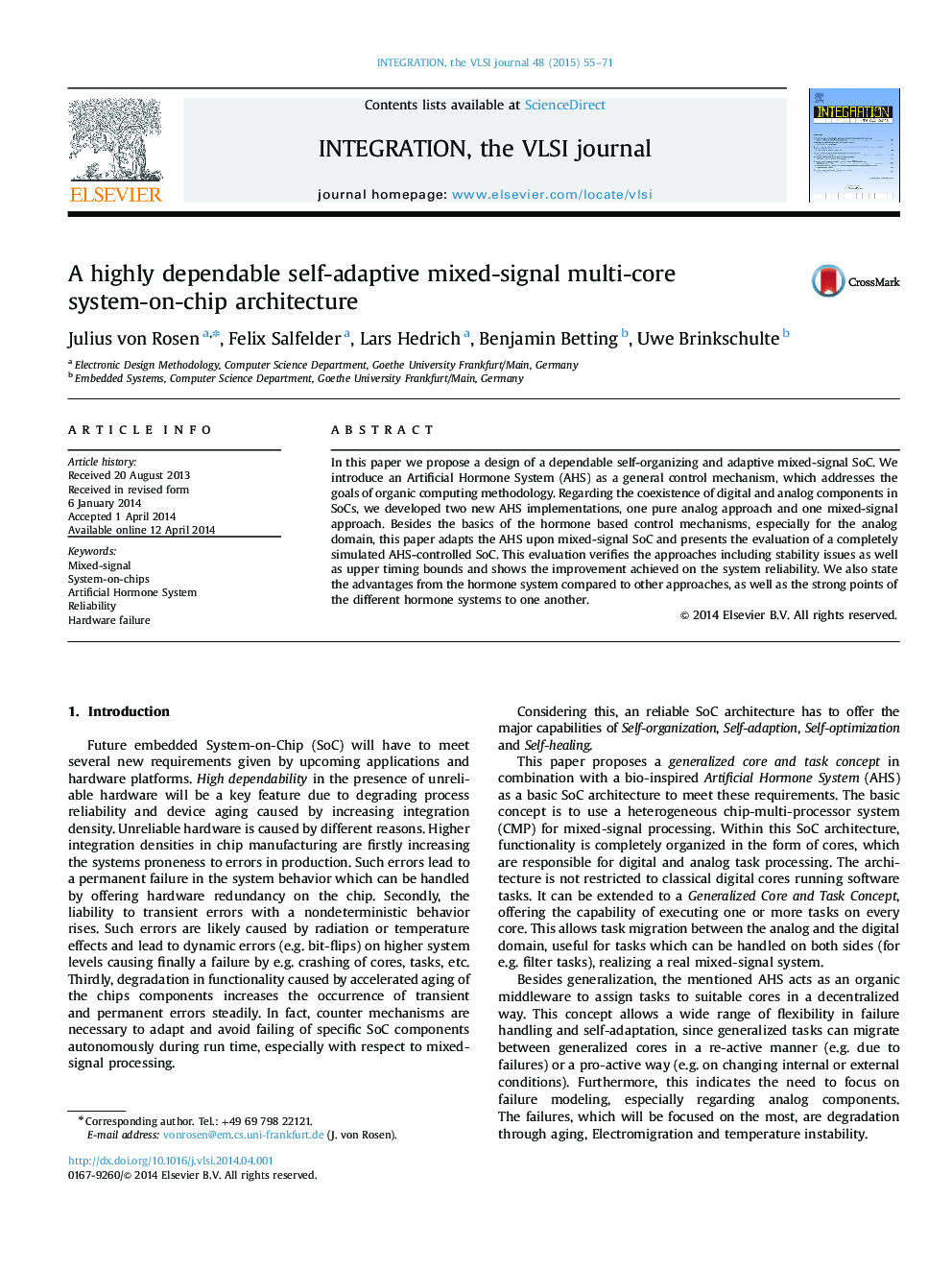| Article ID | Journal | Published Year | Pages | File Type |
|---|---|---|---|---|
| 539629 | Integration, the VLSI Journal | 2015 | 17 Pages |
•Design of a dependable self-organizing and adaptive mixed-signal SoC.•Artificial Hormone System as a general control mechanism.•Mixed-signal task allocation, reallocation and migration.•Verification of the approach including stability, reliability and redundancy.•Realtime capability proven by upper timing bounds.
In this paper we propose a design of a dependable self-organizing and adaptive mixed-signal SoC. We introduce an Artificial Hormone System (AHS) as a general control mechanism, which addresses the goals of organic computing methodology. Regarding the coexistence of digital and analog components in SoCs, we developed two new AHS implementations, one pure analog approach and one mixed-signal approach. Besides the basics of the hormone based control mechanisms, especially for the analog domain, this paper adapts the AHS upon mixed-signal SoC and presents the evaluation of a completely simulated AHS-controlled SoC. This evaluation verifies the approaches including stability issues as well as upper timing bounds and shows the improvement achieved on the system reliability. We also state the advantages from the hormone system compared to other approaches, as well as the strong points of the different hormone systems to one another.
